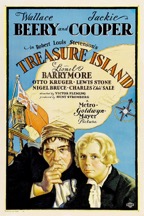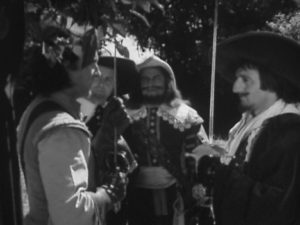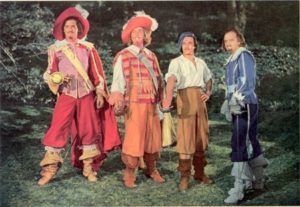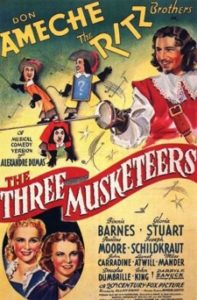Treasure Island (1934)
Treasure Island
Rating: *****
Origin: USA
Director: Victor Fleming
Source: Warner Bros. DVD

Robert Louis Stevenson’s classic 1883 novel established the entire genre of pirate swashbucklers, so naturally it had been filmed in the silent era—five times, in fact. However, none of these older films have survived, so the earliest adaptation we have is this one—but this one’s all we need. It’s a wonderful film that has a lot going for it, but what makes it endlessly re-watchable is the larger-than-life performance of Wallace Beery as Long John Silver.
Conversely, alas, it has one major liability that, despite Beery’s best efforts, makes the modern viewer cringe and wince: the inclusion of Beery’s co-star, child actor Jackie Cooper, as young Jim Hawkins. To be fair, Cooper delivered exactly what was asked of him, which was to be painfully over-earnest and sentimental, like every other 1930s child star. It’s just that by current standards and sensibilities, the performances of 1930s child actors like Jackie Cooper, Shirley Temple, and their ilk, are so God-damned grating that you just want to fast-forward right past them.
All right, we got that little rant out of the way. On to the movie: Treasure Island is a pretty close adaptation of Stevenson’s novel, which means it starts slowly, with the first act involving the fugitive pirate Billy Bones at the Admiral Benbow Inn that establishes the backstory. Fortunately this production has the great Lionel Barrymore (brother of John) in the rôle of Billy Bones, and he leaves no scenery unchewed in a bravura performance that ends in his death from equal parts terror and rum. But in death he unwittingly bequeaths to Jim Hawkins the map to the plunder buried on Treasure Island, and avast! We’re off to the Caribbean.
But how to get there, eh? Eh? Enter Squire Trelawney as played by Nigel Bruce (later to be Dr. Watson to Basil Rathbone’s Sherlock Holmes—harrumph, harrumph!). He takes Jim off to Bristol Port, perfectly depicted with a forest of masts above a row of docked ships. On the Bristol wharf we meet Long John Silver, and from there on the rest of the film belongs to Wallace Beery. Silver is the original engaging scoundrel, and Beery plays him broad, smiling, squinting, rolling his eyes and looking around furtively, making sure the audience is in on the joke of his duplicity from the beginning. Jim Hawkins and Squire Trelawney are completely taken in, allowing Silver to pack the crew of the “Hispaniola” with pirates. But Captain Smollett (craggy Lewis Stone, whom we last saw in the 1923 Scaramouche) isn’t fooled by Silver’s smarmy ways, and spots him as a cunning rogue.
But by that time they’ve arrived at Treasure Island, and it’s mutiny, mates, so serve out the cutlasses! The plot adheres closely to the twists and rapid reversals of the novel, and the action scenes are staged well, their imagery striking and memorable. The tense scene in which Jim Hawkins is pursued around the drifting “Hispaniola” by a wounded pirate, Israel Hands, is particularly fine. One can almost forgive the swab for letting Jackie Cooper survive!
Incidentally, they used a genuine three-master for the “Hispaniola,” a beautiful ship, filming key scenes at sea, so the sailing’s all true to life, and the episodes shot high in the rigging are vertiginous. And cackling, mad old Ben Gunn is the real treasure of the island. What a classic! Immortal line: “Them that die’ll be the lucky ones!”


